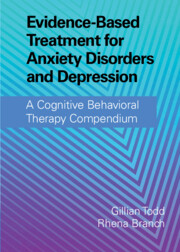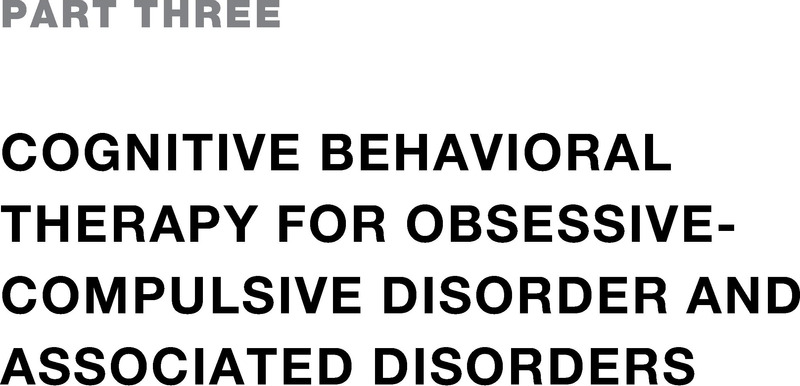 Evidence-Based Treatment for Anxiety Disorders and Depression
Evidence-Based Treatment for Anxiety Disorders and Depression Book contents
- Evidence-Based Treatment for Anxiety Disorders and Depression
- Evidence-Based Treatment for Anxiety Disorders and Depression
- Copyright page
- Contents
- Figures
- Tables
- Contributors
- 1 Introduction
- 2 The History and Philosophical Underpinnings of CBT:
- Part One Cognitive Behavioral Therapy for Anxiety Disorders
- Part Two Cognitive Behavioral Therapy for Posttraumatic Stress Disorder
- Part Three Cognitive Behavioral Therapy for Obsessive-Compulsive Disorder and Associated Disorders
- Part Four Cognitive Behavioral Therapy for Depression
- Part Five Complexity and Comorbidity in Anxiety Disorders and Depression:
- Part Six Specialist Applications of Cognitive Behavioral Therapy for Anxiety Disorders and Depression
- Part Seven Future Developments
- Appendices
- Index
- References
Part Three - Cognitive Behavioral Therapy for Obsessive-Compulsive Disorder and Associated Disorders
Published online by Cambridge University Press: 06 January 2022
- Evidence-Based Treatment for Anxiety Disorders and Depression
- Evidence-Based Treatment for Anxiety Disorders and Depression
- Copyright page
- Contents
- Figures
- Tables
- Contributors
- 1 Introduction
- 2 The History and Philosophical Underpinnings of CBT:
- Part One Cognitive Behavioral Therapy for Anxiety Disorders
- Part Two Cognitive Behavioral Therapy for Posttraumatic Stress Disorder
- Part Three Cognitive Behavioral Therapy for Obsessive-Compulsive Disorder and Associated Disorders
- Part Four Cognitive Behavioral Therapy for Depression
- Part Five Complexity and Comorbidity in Anxiety Disorders and Depression:
- Part Six Specialist Applications of Cognitive Behavioral Therapy for Anxiety Disorders and Depression
- Part Seven Future Developments
- Appendices
- Index
- References
Summary

- Type
- Chapter
- Information
- Evidence-Based Treatment for Anxiety Disorders and DepressionA Cognitive Behavioral Therapy Compendium, pp. 195 - 364Publisher: Cambridge University PressPrint publication year: 2022


